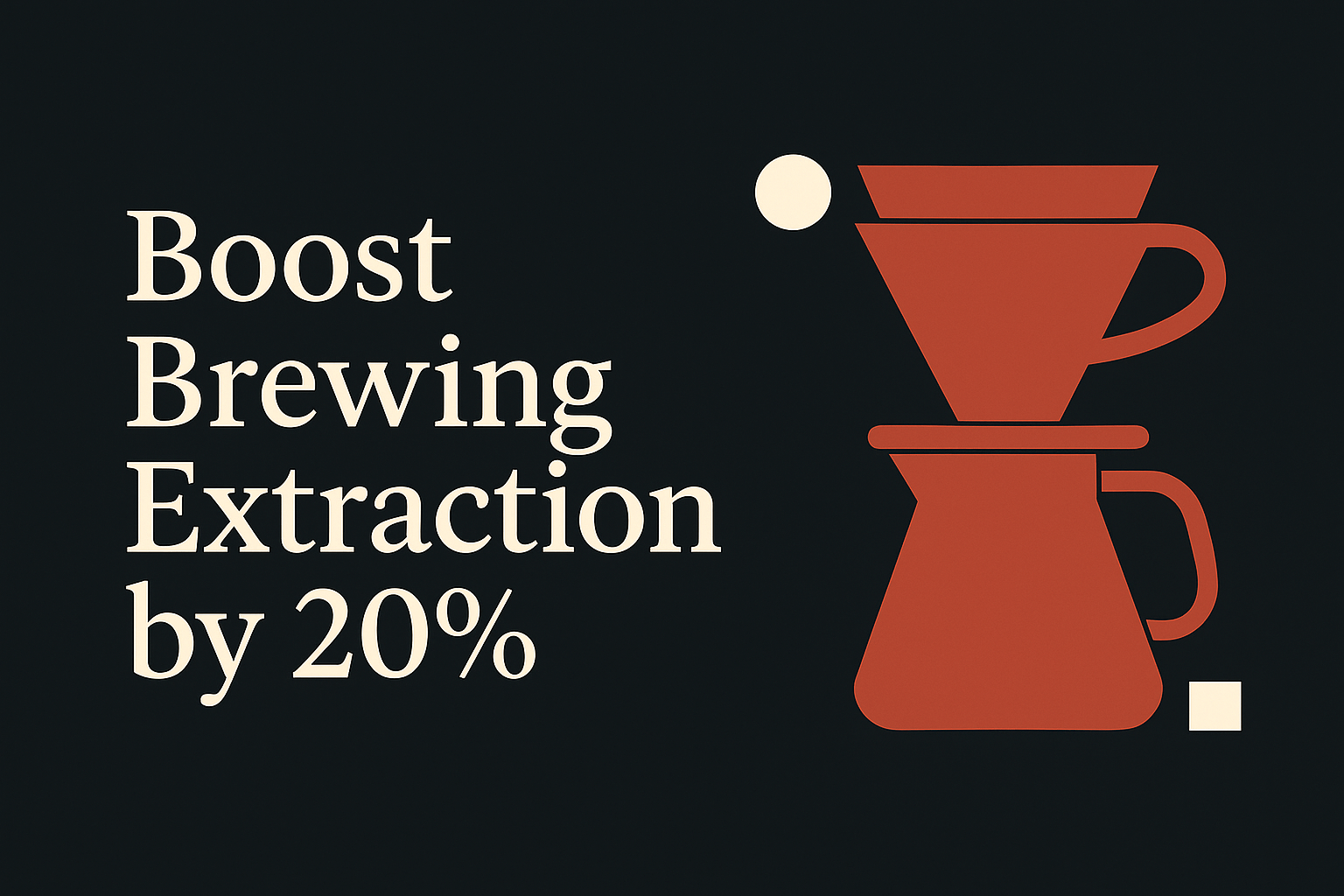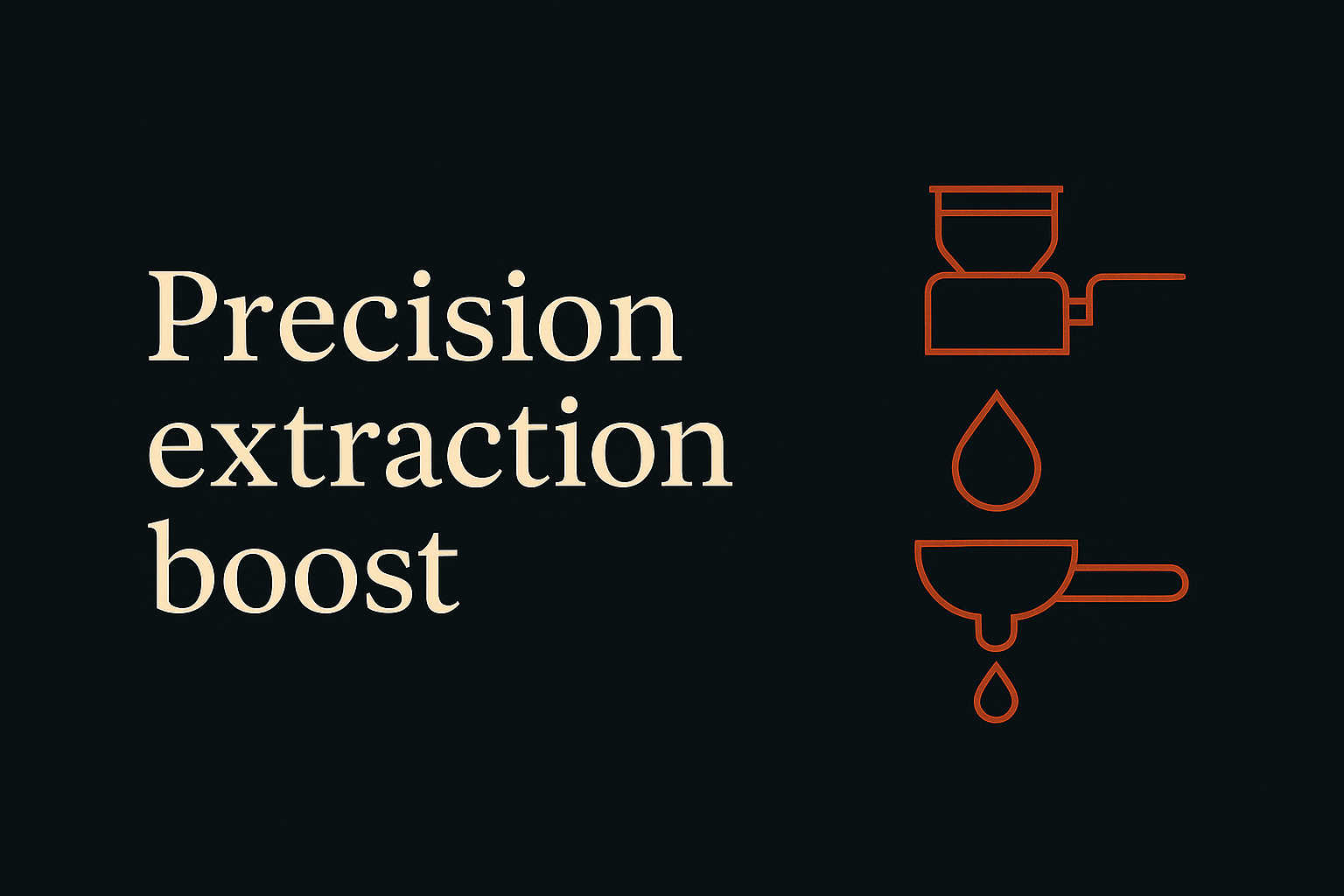
In the ever-evolving world of specialty coffee, precision brewing techniques continue to reshape how we approach extraction. Among these innovations, bypass brewing has emerged as a game-changing method that's captivating both professional baristas and home brewing enthusiasts. This sophisticated technique promises to improve extraction quality by up to 25% whilst offering unprecedented control over strength and flavour balance.
But what exactly is bypass brewing, and why are coffee professionals increasingly turning to this precision dilution method? Let's explore how this technique can revolutionise your daily brew and unlock new dimensions of flavour in your favourite specialty coffees.
Understanding Bypass Brewing: The Science Behind Precision Dilution
Bypass brewing represents a fundamental shift in how we approach coffee extraction. Rather than using traditional brewing ratios, this method involves creating a concentrated coffee using a tighter ratio (typically 1:9 to 1:13), then diluting it with hot water that bypasses the coffee bed entirely.
The beauty of this approach lies in its ability to decouple strength and extraction—two variables that are intrinsically linked in conventional brewing methods. Coffee expert Scott Rao explains that this separation allows brewers to optimise extraction without being constrained by final cup strength requirements.
The technique works by allowing you to extract only the most desirable compounds from your coffee grounds during the initial concentrated brew phase. The bypass water then dilutes this concentrate to your preferred strength without introducing additional extraction variables.
The Three Pillars of Bypass Brewing Success
Prevention of Over-Extraction
One of the most compelling advantages of bypass brewing is its ability to prevent over-extraction. By limiting water contact time with coffee grounds, this method reduces the risk of bitterness by approximately 30% compared to standard brewing approaches. This is particularly beneficial when working with premium single-origin coffees where preserving delicate flavour notes is paramount.
Precise Strength Control
Bypass brewing allows brewers to consistently hit the SCA-recommended TDS (Total Dissolved Solids) range of 1.2-1.4% without altering extraction parameters. This precision control means you can achieve your preferred cup strength whilst maintaining optimal extraction levels—a balance that's challenging to achieve through traditional brewing methods alone.
Enhanced Brewing Efficiency
From a practical standpoint, bypass brewing solves several common brewing challenges. It prevents filter overflow in larger batches, reduces brew times by up to 40%, and maintains consistent extraction quality. These improvements make it particularly appealing for busy morning routines or when brewing for multiple people.
Technical Mastery: Optimising Your Bypass Brewing Setup
Success with bypass brewing requires attention to several technical parameters. The method proves particularly effective with pour-over devices like the V60, where extraction efficiency can be optimised using specific grind and temperature settings.
Grind Size and Temperature
For optimal results, use a finer grind setting (typically 15-18 on a standard grinder scale) for your initial concentrate. This allows for efficient extraction during the shorter contact time. Pair this with higher temperatures (94-98°C) to ensure proper extraction of desirable compounds.
The 40% Rule
Research from Home-Barista forum experiments indicates that a 40% bypass ratio produces optimal results for light to medium roasts. This means 40% of your final cup volume comes from bypass water, whilst 60% comes from your concentrated brew.
Step-by-Step Process
- Calculate your desired final cup volume and divide it into concentrate (60%) and bypass water (40%)
- Brew your concentrate using a 1:10 to 1:12 ratio with the calculated water volume
- Heat your bypass water to the same temperature as your brewing water
- Once your concentrate is complete, immediately add the hot bypass water
- Taste and adjust future brews based on your preferences
Flavour Profile Enhancement Through Bypass Brewing
The flavour improvements achieved through bypass brewing are remarkable. Perfect Daily Grind research shows that this technique enhances sweetness perception by 22% whilst reducing astringency by 35% in blind taste tests.
Pour-over bypass brewing typically yields cleaner cups with enhanced clarity and brightness—qualities that are particularly beneficial for showcasing the nuanced flavour notes in specialty single-origin coffees. The technique allows subtle characteristics like floral notes, fruit acidity, and origin-specific terroir to shine through without being overshadowed by over-extraction artefacts.
Versatility Across Brewing Methods
Whilst bypass brewing excels with pour-over methods, its principles can be adapted across various brewing techniques:
Chemex Applications
Chemex users benefit from bypass techniques to manage the longer extraction times inherent to this brewing method. The bypass approach allows for better control over the final cup whilst maintaining the clean, bright characteristics that make Chemex brewing so appealing.
French Press Adaptation
Even French press enthusiasts have reported improved results using bypass principles to reduce sediment whilst maintaining the full body that defines this brewing method. The technique involves brewing a stronger concentrate for a shorter time before diluting.
The Science of Extraction Optimisation
Recent extraction research confirms that bypass brewing allows home baristas to achieve extraction percentages in the ideal 18-22% range more consistently than standard methods. This precision control helps address common brewing challenges like channeling and uneven extraction.
This consistency becomes particularly important when working with density-variable single-origin coffees, where traditional brewing methods might struggle to achieve uniform extraction. The bypass technique provides the flexibility needed to accommodate these variables whilst maintaining cup quality.
Future Directions in Bypass Brewing
As specialty coffee continues trending toward lighter roasts and complex processing methods, bypass brewing's importance will only grow. These coffees benefit tremendously from the tailored extraction approaches that bypass brewing enables, allowing their unique characteristics to be fully expressed.
The technique represents a broader movement toward precision brewing, where understanding and controlling variables leads to consistently superior results. For home baristas serious about coffee quality, mastering bypass brewing opens new possibilities for exploring the full potential of their favourite beans.
Elevate Your Home Brewing with Bypass Techniques
Bypass brewing represents more than just another brewing method—it's a gateway to understanding the intricate relationship between extraction, strength, and flavour. By mastering this technique, you'll develop a deeper appreciation for how small adjustments can yield significant improvements in cup quality.
Ready to explore how bypass brewing can transform your daily coffee experience? Start experimenting with this precision technique using our curated selection of premium specialty coffee beans, carefully chosen to showcase the enhanced clarity and complexity that bypass brewing delivers. Your journey toward coffee brewing mastery begins with the right beans and the knowledge to unlock their full potential.




